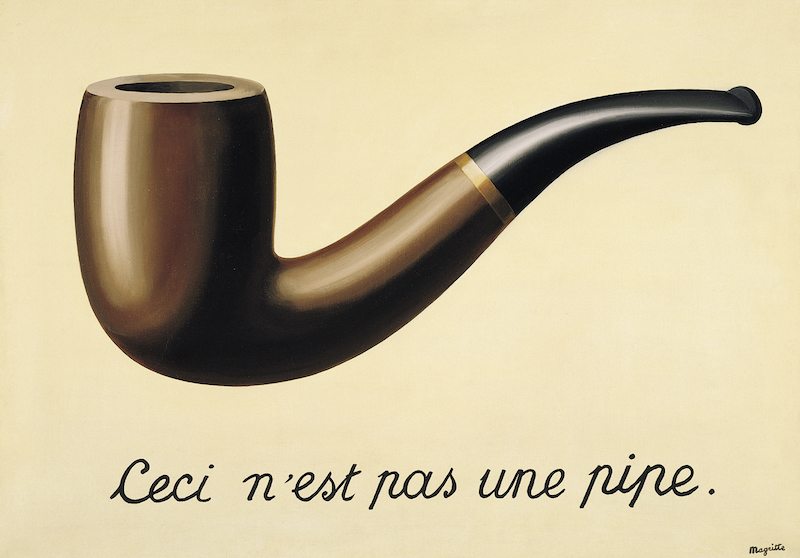Rene Magritte
Episode #1 of the course “Great surrealist painters of all time”
Born in 1898 in Belgium, Rene Magritte influenced surrealist art like no one else. Working as an illustrator for commercial art projects, his fine art exhibits the kind of rapid impact and intense subconscious messaging that is often found in today’s advertisements.
Magritte combined images that people did not expect with text that seemed to contradict the image. He attempted to show there was no mystery behind the mystery, and that there is mystery in the everyday. Mingling the ordinary and the extraordinary, Magritte also aimed to show how an object is never fully captured in an artwork, no matter how realistic the depiction.
 The Treachery of Images
The Treachery of Images
One of Magritte’s most famous works, The Treachery of Images, shows a finely drawn and realistic-looking pipe, as if for an advertisement. Underneath the image, the French phrase “ceci n’est pas une pipe” (“this is not a pipe”) reminds the viewer that while they are looking at a realistic depiction, it is still just a representation. When asked about the image, Magritte responded, “Of course it’s not a pipe. Try putting tobacco in it.”
 Golconda
Golconda
Magritte lived a quiet, middle-class life through which he found a great deal of inspiration. Several of his paintings depict residential areas infused with fantastical, dream-like elements, such as Golconda. He often painted men in bowler hats—a popular convention of the day—which are said to be self-portraits as well.
 The Son of Man
The Son of Man
Sometimes, as in The Son of Man, the person has another object, like an apple, which conceals his face. This symbolic meaning of this technique has been debated, but Magritte insisted that the viewer brings the meaning to the painting rather than the image having a meaning of its own.
Respected and successful, Magritte enjoyed renown throughout his career until his death in 1967.
Share with friends

